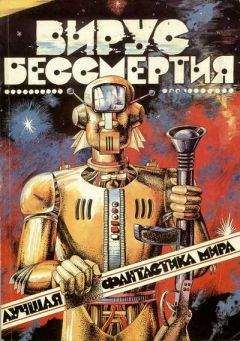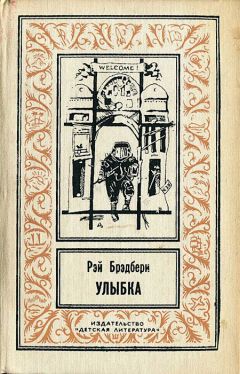71. L. Siegelbaum ‘Production Collectives and Communes and the “Imperatives” of Soviet Industrialization’, Slavic Review, 45 (1986), pp. 65–79.
72. J. C. McClelland ‘Utopianism versus Revolutionary Heroism in Bolshevik Policy: the Proletarian Culture Debate’, Slavic Review, 39 (1980), pp. 404–7, 415.
73. J. Stalin Problems of Leninism (Moscow, 1947), pp. 421–2, 424, ‘Results of the First Five-Year Plan’, CC Plenum, 7 January 1933.
74. Stalin, Problems of Leninism, pp. 498–9, ‘Report on the Work of the Central Committee to the 17th Congress’, 26 January 1934.
75. K. E. Bailes Technology and Society under Lenin and Stalin (Princeton, NJ, 1978), p. 166.
76. Stalin, Problems of Leninism, p. 502.
77. Stalin, Problems of Leninism, pp. 544–6, ‘On the Draft Constitution of the USSR’, 25 November 1936: ‘…all the exploiting classes have been eliminated. There remains the working class. There remains the peasant class. There remains the intelligentsia.’
78. Stalin, Problems of Leninism, p. 503.
79. Zitelmann, Hitler, p. 164.
80. Zitelmann, Hitler, p. 168; see too Syring, Hitler: seine politische Utopie, pp. 184–7.
81. See for example A. Angelopoulos Planisme etprogres social (Paris, 1951) esp. Ch. 3; E. Lederer Planwirtschaft (Tübingen, 1932); F. Lenz Wirtschaftsplanung und Planwirtschaft (Berlin, 1948).
82. Zitelmann, Hitler, p. 321.
83. P. Kluke ‘Hitler und das Volkwagenprojekt’, Vierteljahrshefte für Zeitgeschichte, 8 (1960), p. 349.
84. On Todt see J. Herf Reactionary Modernism: Technology, Culture, and Politics in Weimar and the Third Reich (Cambridge, 1984), pp. 199–200; on the Westwall see J. Heyl The Construction of the Westwall. An Example of National Socialist Policy-Making’, Central European History, 14 (1981), p. 77.
85. Herf, Reactionary Modernism, pp. 200, 204–6.
86. Herf, Reactionary Modernism, p. 168. An interesting example of the new view of technology and the people’s community is given in K. Gispen ‘Visions of Utopia: Social Emancipation, Technological Progress and Anticapitalism in Nazi Inventor Policy,
1933–1945’, Central European History, 32 (1999), pp. 35–51.
87. Bailes, Technology and Society, pp. 160–63.
88. Colton, Socialist Metropolis, p. 259; K. Clark ‘Engineers of Human Souls in an Age of Industrialization: Changing Cultural Models, 1929–31’, in W. Rosenberg and L. Siegelbaum (eds) Social Dimensions of Soviet Industrialization (Bloomington, Ind., 1993), p. 249.
89. Bailes, Technology and Society, p. 163.
90. Clark, ‘Engineers of Human Souls’, pp. 250–51; Bailes, Technology and Society, pp. 176–7.
91. Bailes, Technology and Society, p. 289; K. E. Bailes ‘Stalin and the Making of a New Elite: A Comment’, Slavic Review, 39 (1980), pp. 268–9; S. Fitzpatrick ‘Stalin and the Making of a New Elite, 1928–1939’, Slavic Review, 38 (1979), pp. 385–7, 396–8.
92. Zitelmann, Hitler, p. 182.
93. On Eichmann and the security bureaucracy see Y. Lozowick Hitler’s Bureaucrats: the Nazi Security Police and the Banality of Evil (London, 2000); H. Safrian Die Eichmann Männer (Vienna, 1993).
94. M. Kater The Nazi Tarty: a Social Profi le of Members and Leaders, 1919–1945 (Oxford, 1983), pp. 252–3, 264 (fi gures based
on statistical sampling); H. F. Ziegler Nazi Germany’s New Aristocracy: the SS Leadership, 1925–1939 (Princeton, NJ, 1989), pp. 102–5.
95. Ziegler, Nazi Germany’s New Aristocracy, p. 73.
96. I. Halfi n The Rape of the Intelligentsia: A Proletarian Foundation Myth’, Russian Review, 56 (1997), pp. 103, 106; A. Lunacharsky On Education: Selected Articles and Speeches (Moscow, 1981), lecture on ‘Education and the New Man’, 23 May 1928.
97. S. Fitzpatrick Everyday Stalinism: Ordinary Life in Extraordinary Times: Soviet Russia in the 1930s (Oxford, 1999), pp. 75–6.
98. H. Rauschning Hitler Speaks (London, 1939), pp. 241–3.
99. Rauschning, Hitler Speaks, p. 247; Janka, braune Gesellschaft, pp. 183–91, 200–201.
100. P. Weindling Health, Race and German Politics between National Unifi cation and Nazism 1870–1945 (Cambridge, 1989), pp. 7–8; P. Weingart ‘Eugenic Utopias: Blueprints for the Rationalization of Human Evolution’, Sociology of the Sciences Yearbook: Vol VIII (Dordrecht, 1984), p. 175.
101. L. R. Graham ‘Science and Values: The Eugenics Movement in Germany and Russia in the 1920s’, American Historical Review, 82 (1977), pp. 1132, 1145–7.
102. J. Stalin Works (13 vols, Moscow 1953–55), vol. i, p. 316, ‘Anarchism or Socialism?’ 1906–7; see too V. N. Soyfer Lysenko and the Tragedy of Soviet Science (New Brunswick, NJ, 1994), pp. 200–203.
103. Graham, ‘Science and Values’, pp. 1139–43, 1151; F. Hirsch ‘Race without the Practice of Racial Polities’, Slavic Review, 61 (2002), pp. 32–4.
104. Sofer, Lysenko, chs 8–11; L. R. Graham Science, Philosophy and Human Behaviour in the Soviet Union (New York, 1987), pp. 221–2.
105. Weindling, Health, Race and German Politics, pp. 436–7; R. Proctor Racial Hygiene: Medicine under the Nazis (Cambridge, Mass., 1988), p. 286.
106. Graham, ‘Science and Values’, p. 1143.
107. Rauschning, Hitler Speaks, p. 243.
108. Weindling, Health, Race and German Politics, pp. 522–7; H. Friedlander The Exclusion and Murder of the Disabled’, in
R. Gellately and N. Stoltzfus (eds) Social Outsiders in Nazi Germany (Princeton, NJ, 2001), pp. 146–8; Weingart, ‘Eugenic Utopias’, pp. 183–4.
109. Friedlander, ‘Murder of the Disabled’, p. 148.
110. Weindling, Health, Race and German Politics, pp. 529–30, 533; G. Bock ‘Racism and Sexism in Nazi Germany: Motherhood, Compulsory Sterilization and the State’, in R. Bridenthal, A. Grossmann and M. Kaplan (eds) When Biology became Destiny: Women in Weimar Germany and Nazi Germany (New York, 1984), pp. 276–7, 279–80. Some 2000 were also castrated by 1940, including women, who were subjected to overectomies. See U. Kaminsky Zwangssterilisation und ‘Euthanasie’ im Rheinland (Cologne, 1995), pp. 535–7, whose fi gures show that sterilization proceeded most rapidly between 1934 and 1936, and H. Friedlander The Origins of Nazi Genocide: From Euthanasia to the Final Solution (Chapel Hill, NC, 1995), pp. 26–30.
111. Proctor, Racial Hygiene, pp. 203–4; Weindling, Health, Race and German Politics, pp. 526–9.
112. Weindling, Health, Race and German Politics, pp. 530–32. See too S. Maiwald and G. Mischler Sexualität unter dem Hakenkreuz (Hamburg, 1999), pp. 105–16.
113. P. Bleuel Strength through Joy: Sex and Society in Nazi Germany (London, 1973), p. 194; Weingart, ‘Eugenic Utopias’, pp. 178–80.
114. K. H. Minuth (ed.) Akten der Reichskanzlei: Regierung Hitler 1933–1938 (Boppard am Rhein, 1983) vol. ii, pp. 1188–9; Maiwald and Mischler, Sexualität, pp. 108–9.
115. L. Pine Nazi Family Policy 1933–1945 (Oxford, 1997), p. 132.
116. U. Frevert Women in German History (Oxford, 1989), pp. 232–3; R. Grunberger A Social History of the Third Reich (London, 1968), p. 300.
117. Frevert, Women in German History, p. 237; on the Pfl ichtjahr see F. Petrick ‘Eine Untersuchung zur Beseitigung der Arbeitslosigkeit unter der deutschen Jugend in den Jahren 1933 bis 1935’, Jahrbuch für Wirtschaftsgeschichte, Part I (1967), pp. 291, 299; on employment see S. Bajohr Die Hälfte der Fabrik: Geschichte der Frauenarbeit in Deutschland 1914 bis 1945 (Marburg, 1979), pp. 2–52.
118. Frevert, Women in German History, pp. 236–7; Grunberger, Social History of the Third Reich, pp. 312–13.
119. Proctor, Racial Hygiene, pp. 283–4.
120. Bleuel, Strength through Joy, p. 111.
121. On Himmler see Kroll, Utopie als Ideologie, pp. 213–22; see too J. Hoberman ‘Primacy of Performance: Superman not Superathlete’, in J. A. Mangan (ed.) Shaping the Superman. Fascist Body as Political Icon – Aryan Fascism (London, 1999), pp. 78–80.
122. I. Heinemann ‘Rasse, Siedlung, deutsches Blut’: Das Rasse– & Siedlungshauptamt der SS und die rassenpolitische Neuordnung Europas (Göttingen, 2003), pp. 64–5; on race classifi cation in Europe see I. Heinemann’ “Another Type of Perpetrator”: The SS Racial Experts and Forced Population Movements in the Occupied Regions’, Holocaust and Genocide Studies, 15 (2001), pp. 389–93, 395–9.
123. R. J. Lifton The Nazi Doctors: Medical Killing and the Psychology of Genocide (London, 1986), pp. 25, 41–5, 469–87; D. Peukert The Genesis of the “Final Solution” from the Spirit of Science’, in Crew (ed.), Nazism and German Society, p. 285.
124. Lifton, Nazi Doctors, p. 477.
125. Proctor, Racial Hygiene, p. 196.
126. E. P. Russell ‘“Speaking of Annihilation”: Mobilizing for War against Human and Insect Enemies’, Journal of American History,
82 (1996), pp. 1519–22; E. Kogon, H. Langbein and A. Riickeri (eds) Nazi Mass Murder: A Documentary History of the Use of Poison Gas (New Haven, Conn., 1993), pp. 146–7, 193–5, 206–9.
127. Friedlander, ‘Murder of the Disabled’, pp. 150–52; Proctor, Racial Hygiene, p. 186; see too M. Burleigh Death and Deliverance:
‘Euthanasia’ in Germany 1900–1945 (Cambridge, 1994), pp. 96–7, 112–13; Friedlander, Origins of Nazi Genocide, pp. 37–40.
128. Lifton, Nazi Doctors, p. 45; Friedlander, ‘Murder of the Disabled’, p. 151; S. Kühl The Relationship between Eugenics and the socalled “Euthanasia Action” in Nazi Germany’, in M. Szöllösi-Janze (ed.) Science in the Third Reich (Oxford, 2001), pp. 201–3, who argues that war was the primary incentive to start killing.
129. Friedlander, ‘Murder of the Disabled’, pp. 154–5; Friedlander, Origins of Nazi Genocide, pp. 83–8.
130. Friedlander, ‘Murder of the Disabled’, pp. 155–6; Proctor, Racial Hygiene, pp. 206–8.
131. K. Pinnow ‘Cutting and Counting: Forensic Medicine as a Science of Society in Bolshevik Russia, 1920–29’, in D. Hoffmann and Y. Kotsonis (eds) Russian Modernity: Politics, Knowledge, Practices (London, 2000), p. 123.
132. Fitzpatrick Everyday Stalinism, pp. 117–22, 130–32; Alexopoulos, Stalin’s Outcasts, pp. 169–75.
133. P. Barton Uinstitution concentrationnaire en Russe 1930–1957 (Paris, 1959), p. 56.
134. S. Allan Comrades and Citizens: Soviet People (London, 1938), pp. 122, 155–6.
135. A. E. Gorsuch ‘NEP Be Damned! Young Militants in the 1920s and the Culture of Civil War’, Russian Review, 56 (1997), pp. 576–7. Smoking was also condemned as harmful to the Soviet ‘body’.
136. H. K. Geiger The Family in Soviet Russia (Cambridge, Mass., 1968), pp. 88–90.
137. Geiger, Family in Soviet Russia, p. 190; M. Buckley Women and Ideology in the Soviet Union (New York, 1989), pp. 134–5.
138. Geiger, Family in Soviet Russia, p. 94.
139. Geiger, Family in Soviet Russia, p. 95; on attitudes to sexual emancipation see E. Naimark Sex in Public: the Incarnation of Early Soviet Ideology (Princeton, NJ, 1997).
140. Allan, Comrades and Citizens, pp. 84–5; Geiger, Family in Soviet Russia, p. 92.




